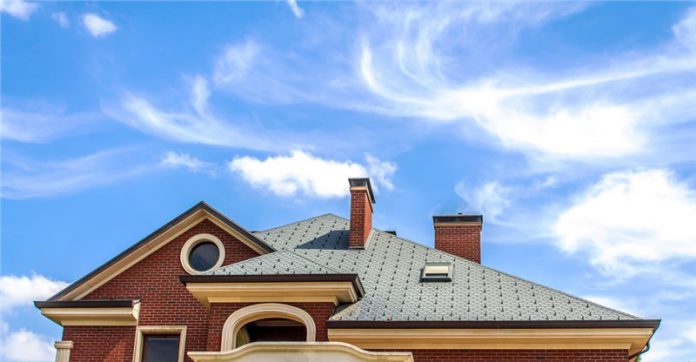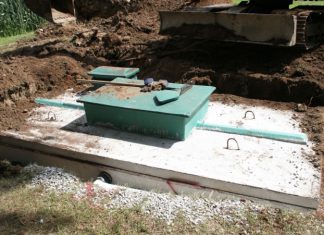Your home’s roof is an essential investment that is expected to last for decades. Apart from the aesthetics and construction element, the roof plays a vital role in ensuring the safety of occupants against harsh weather conditions and outside intrusion. Therefore, your home’s security and functionality largely depend on the roofing material you select.
With a wide range of options available, selecting the best roofing material can be a mind-boggling task for many homeowners. Fortunately, here are some essential tips by professionals like infinity energy to choose the best roofing materials for your new home.
Consider Energy Efficiency
Roof materials largely contribute to your monthly energy bills. Consider high-quality materials with higher thermal insulating properties and tend to reflect light rather than absorb it. With a cool roof, you won’t need an air conditioner to regulate temperatures to a comfortable level. This reduces your energy costs significantly.
Metal roofs are extremely energy efficient since they tend to reflect away the sun’s heat, reducing your cooling bills. For this reason, they are used together with asphalt shingles, which have low energy efficiency ratings. Additionally, materials such as concrete tile and slate have excellent thermal insulating properties, saving energy significantly.
Look At The Durability
Installing a new roof is one of the most expensive home improvement repairs that homeowners incur. Thus, finding a durable roofing material that can withstand extreme weather, fire, and insects can help prevent future costs.
It’s worth noting that various roof materials have different strengths and durability. Cheap materials are often vulnerable to harsh environmental conditions, and you may be forced to make constant replacements.
Metal roofs are popularly used in places that are prone to fire due to their higher fire-resistance ratings. Moreover, they are built to resist stains and have a higher strength to withstand strong winds and rainstorms.
Materials such as clay and cement tile roofs can be used everywhere due to their incredible strength and durability. Conversely, wood shake shingle roofs may be restricted in places prone to wildfires due to their low fire-resistant ratings.
Therefore, consulting a reliable Cincinnati roofing company, can help you select durable materials that are effective with your area’s climate.
Longevity
Roofing materials have a varying lifespan based on their unique properties. Hence, ensure that you choose materials that best meet your goals. A material with a longer lifespan saves on constant replacement costs. The following are different roofing materials with their lifespan.
- Metal roofs: When properly installed, they can last between 50 to 75 years.
- Asphalt shingles- lasts for approximately 20 years and must be meticulously maintained
- Rubber slates – can last up to 100 years if properly maintained
- Lay tiles – can last to 100 years if properly installed and maintained
- Wood shakes shingles – 35 years with proper maintenance
- Built-up Roofing – 20 to 30 years with regular inspections in place
- Wood Shingle – 20 to 30 years
Consider The Cost And Level Of Maintenance
Maintenance should be a significant concern when opting for roofing materials for your new home. Some roof materials are costly to maintain based on the cost of repairs and ease of cleaning. Homeowners should opt for materials that are easy to clean and attract lower maintenance costs. The following is a list of roof materials and their level of maintenance.
- Metal shingles – they have low maintenance due to their durability features. Also, they are easy to clean since you only need to hose off debris and dirt occasionally.
- Slate tile – you need to invest in a regular inspection to ensure the roof remains in good condition. Moreover, cleaning should be handled by professionals due to their fragility.
- Concrete tile – they attract low-maintenance and require occasional hosing to remove dirt and collected debris.
- Stone-coated steel – homeowners are required to check for exposed fasteners, rust, and damage over time. Moreover, occasional hosing off debris should be done to maintain its quality.
- Wood shingles and shakes – these materials are quite fragile and need to be treated regularly to prevent damage.
- Standing Seam – these materials need to be fastened from time to time due to constant contraction and expansion. However, they require minimal maintenance compared to other materials.
Cost of Materials And Installation
The budget comes into play when choosing roofing materials. Different materials vary in cost, depending on the brand, insulation properties, quality, and production costs. Homeowners should also consider the installation costs since they influence the overall cost of the material. The following are some popular roofing materials and their cost estimates.
- Metal roof – this is one of the costly roof materials due to its lower maintenance costs. You can expect to pay between $7 and $9 per square ft.
- Clay tile – this is an expensive material due to its longer lifespan and higher installation costs. You can expect to pay between $12 and $18 per square ft.
- Standing seam: This material attracts higher installation costs due to the limited number of qualified contractors. You can expect to pay between $7 and $13 square ft.
- Concrete tile – the material attracts an installation fee of 30%-50% of the material’s total price. You can expect to pay between $6 and $10 per square ft.
- Wood shingles and shakes – wood shingles are affordable, ranging from $4 to $9 per square ft. However, they have high installation costs due to their complexity.
It is important to note that just because a material is expensive doesn’t mean that it has a longer lifespan. Thus, it is essential to contact a reliable roofing company, such as Cincinnati roofing, to help you select a material that best suits your needs and budget.
Selecting the best roofing materials for your home is an essential task that requires meticulous considerations. Looking at the cost, durability, lifespan, energy efficiency, and maintenance cost will help you make an informed decision.















